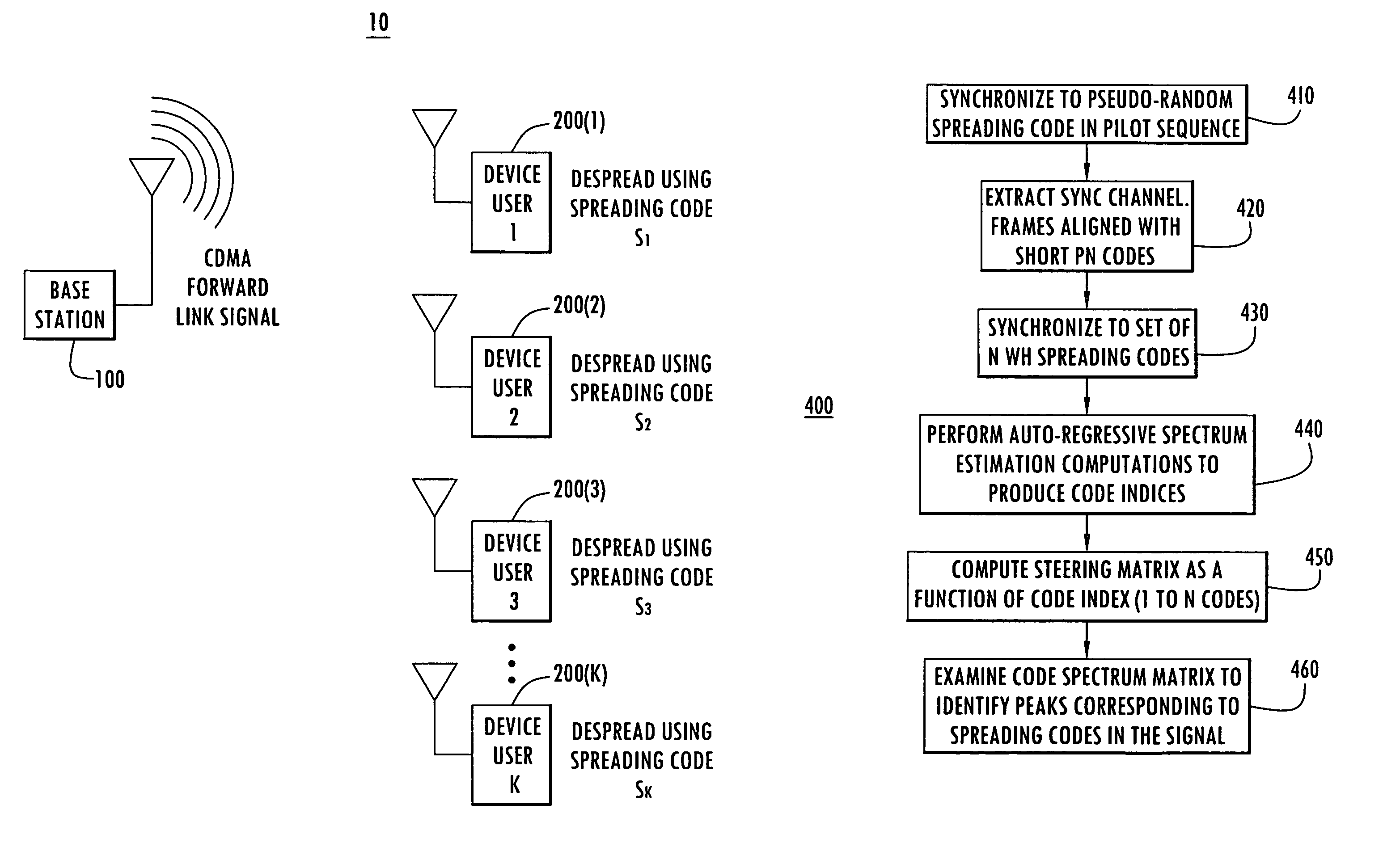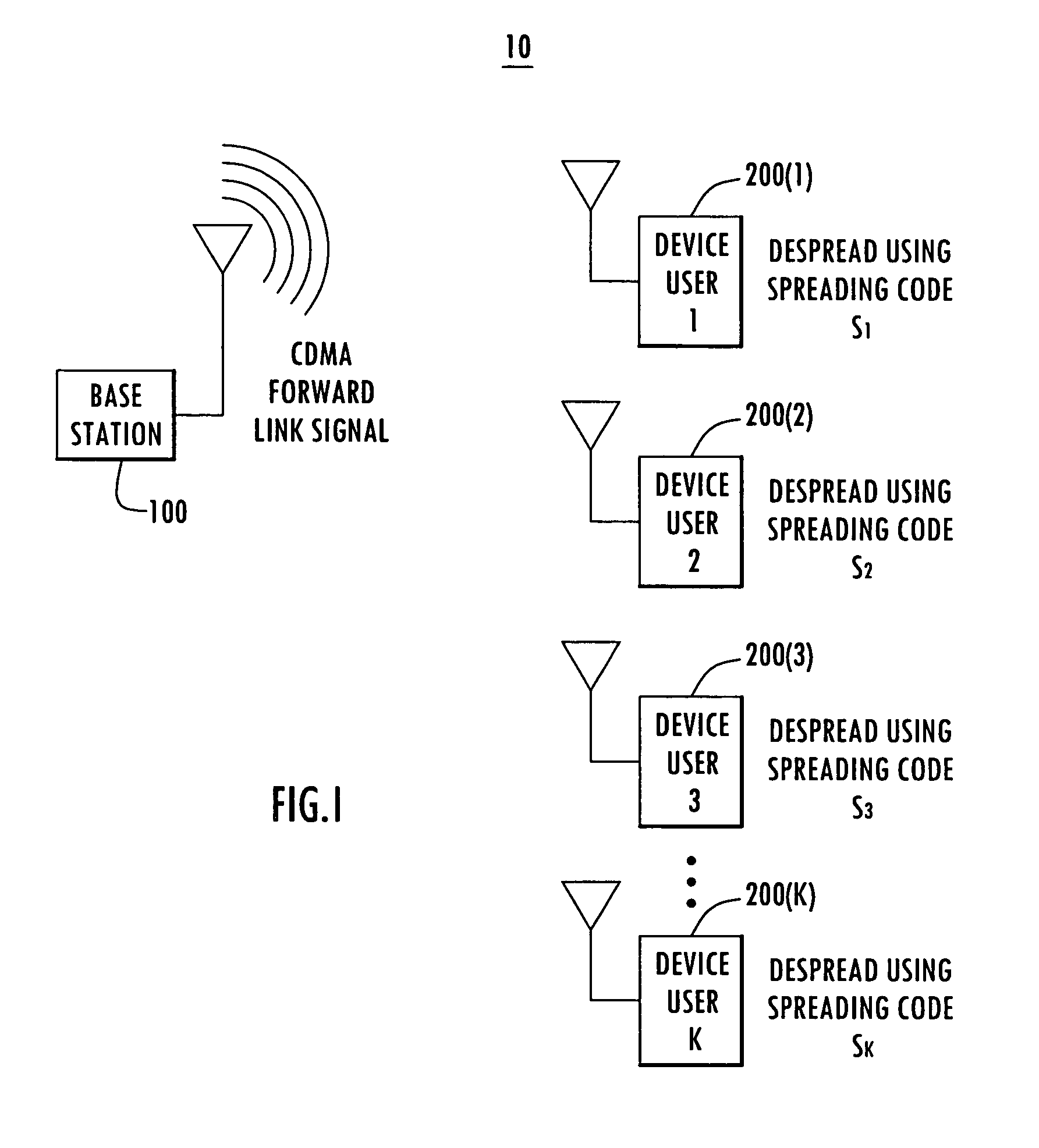Bit detection using code spectrum transform techniques for interference cancellation
a code spectrum and interference cancellation technology, applied in the field of wireless communication systems, can solve the problems of failure of the technique, the inability to estimate the spread of the code of the interfering user at the subscriber device, etc., and achieve the effect of reducing the rank, reducing spurious peak power spectral density, and increasing the detection rate of cod
- Summary
- Abstract
- Description
- Claims
- Application Information
AI Technical Summary
Benefits of technology
Problems solved by technology
Method used
Image
Examples
first embodiment
[0046] the spreading codes ŝk, which are the columns of the full spreading code matrix ŜN, are derived by computing the weight vector aM+1 using the Wiener-Hopf equation, equation (5) for a full-rank ARSE solution. That is, the weight vector aM+1=∥ε∥2 (RM+1)−1uM+1 is computed from samples of the received signal over time. Next, the power spectral density function Py(N) is computed according to equation 11 as a function of the full spreading code matrix and the weight vector. The peaks in the PSD as a function of spreading code index reveal the spreading codes of destination devices present in the received signal.
[0047]FIG. 5 illustrates a numerical example to show the performance of the ARSE algorithm as applied to the CDMA problem. FIG. 5 shows a PSD versus spreading code plot for an example where, N=64 (WH codes as in the IS-95 forward link), Eb / N0=5 dB, K=9 randomly chosen users, M=1000 bits, and an L=1 tap channel are used. The algorithm can correctly identify all 9 codes presen...
second embodiment
[0055]FIG. 7 illustrates a portion of a baseband signal processor 500 (e.g., modem) in a device 200 that performs the MWF implementation. As is known in the art, the baseband signal processor 500 may be implemented as an application specific integrated circuit comprised of digital logic gates configured to perform the desired functionality. Alternatively, the baseband signal processor 500 may be a microprocessor accompanied by instructions stored on a processor readable medium that, when executed by the microprocessor, cause the microprocessor to perform the baseband signal processing functions. Block 510 performs code detection using a correlation subtraction architecture of an MWF according to the techniques of the second embodiment and the equations set forth above in Table 1. The outputs of the block 510 are the code indices for the K users present in the forward link signal, and this information is coupled to an interference cancellation block 520. The interference cancellation...
PUM
 Login to View More
Login to View More Abstract
Description
Claims
Application Information
 Login to View More
Login to View More - R&D
- Intellectual Property
- Life Sciences
- Materials
- Tech Scout
- Unparalleled Data Quality
- Higher Quality Content
- 60% Fewer Hallucinations
Browse by: Latest US Patents, China's latest patents, Technical Efficacy Thesaurus, Application Domain, Technology Topic, Popular Technical Reports.
© 2025 PatSnap. All rights reserved.Legal|Privacy policy|Modern Slavery Act Transparency Statement|Sitemap|About US| Contact US: help@patsnap.com



